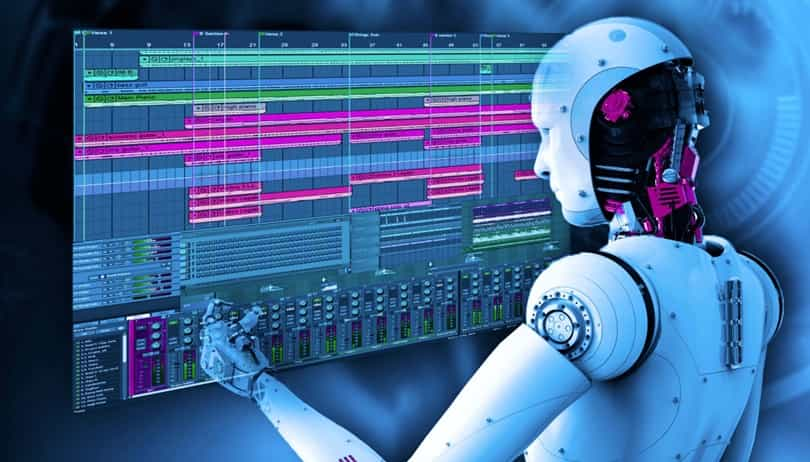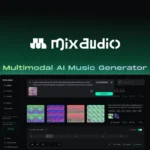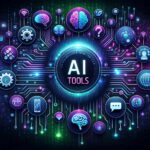The intersection of artificial intelligence (AI) and music has transformed how we compose, produce, and experience sound. What was once a domain reserved for trained musicians with access to expensive instruments and recording studios has now become increasingly democratized through AI-powered platforms. These tools enable anyone—from hobbyists to professional composers—to create music with the help of sophisticated machine learning algorithms.
In this article, we explore the world of AI music platforms: what they are, how they work, their advantages and limitations, and a detailed look at the top platforms currently shaping the industry.
1. What Are AI Music Platforms?
AI music platforms are digital tools powered by machine learning algorithms designed to generate, assist, or enhance music creation. These platforms use large datasets of musical styles, instruments, and compositions to “learn” how to produce coherent and aesthetically pleasing audio tracks.
Core Technologies Behind AI Music Tools:
- Deep Learning: Neural networks analyze musical patterns and create new ones.
- Natural Language Processing (NLP): Used in platforms where users can describe the kind of music they want in text.
- Symbolic Music Modeling: AI processes musical symbols like MIDI notes rather than raw audio.
- Audio Synthesis: Converts symbolic music into realistic instrument sounds.
2. Benefits of AI in Music Creation
A. Accessibility
AI tools make music production accessible to people with no formal training. Users can create entire soundtracks or songs with a few clicks or voice commands.
B. Speed and Efficiency
AI can compose background music, generate drum loops, or replicate styles of famous composers in seconds, greatly accelerating the creative process.
C. Cost-Effective
Hiring musicians or sound engineers can be expensive. AI platforms offer affordable alternatives for indie artists, content creators, and marketers.
D. Inspiration and Collaboration
Even for seasoned musicians, AI serves as a creative partner—suggesting chords, generating variations, or filling in gaps.
3. Limitations and Ethical Concerns
A. Creativity vs. Automation
Some argue that AI-generated music lacks the emotional depth or innovation of human-created compositions.
B. Copyright and Ownership
Who owns an AI-generated track? The user, the developer, or the algorithm? This remains a gray area in intellectual property law.
C. Style Reproduction
AI models trained on specific artists’ work can mimic their style too closely, potentially raising legal and ethical concerns.
D. Lack of Human Touch
AI is excellent at pattern recognition but still struggles with improvisation, emotional nuance, and cultural context.
4. Leading AI Music Creation Platforms
A. AIVA (Artificial Intelligence Virtual Artist)
Website: https://www.aiva.ai
Overview:
AIVA is one of the most popular platforms for AI-generated classical and cinematic music. It’s widely used for film scoring, video games, and advertising.
Key Features:
- Multiple music styles (modern cinematic, pop, jazz).
- Editable scores in MIDI format.
- Allows user input for emotional tone (e.g., happy, suspenseful).
Best For: Composers, filmmakers, and game developers.
B. Amper Music
Website: https://www.ampermusic.com
Overview:
Acquired by Shutterstock, Amper is an intuitive tool for generating royalty-free music tracks. It is ideal for content creators and marketers.
Key Features:
- Browser-based interface.
- Style and mood customization.
- Drag-and-drop arrangement of instrument layers.
Best For: YouTubers, podcasters, marketing teams.
C. Soundraw
Website: https://soundraw.io
Overview:
Soundraw blends AI-generated music with a unique customization interface. It allows users to edit individual parts of a song—intro, verse, chorus, etc.—after AI generates it.
Key Features:
- Real-time music generation.
- Strong customization panel.
- Commercial use license available.
Best For: Designers, creatives, and video editors who want tailored soundtracks.
D. Boomy
Website: https://boomy.com
Overview:
Boomy allows users to create and publish songs on platforms like Spotify or Apple Music. It emphasizes social sharing and monetization.
Key Features:
- Genre selection: EDM, rap beats, lo-fi, etc.
- Option to add vocals and lyrics.
- Publishing and royalty generation.
Best For: Aspiring musicians, hobbyists, and influencers.
E. Ecrett Music
Website: https://ecrettmusic.com
Overview:
Ecrett Music targets creators who need background music quickly. The interface is built to let users choose scene, mood, and genre.
Key Features:
- Royalty-free audio.
- Drag-and-drop video and audio sync.
- Easy integration with video editors.
Best For: Video creators, game developers, freelancers.
F. Splash
Website: https://www.splashmusic.com
Overview:
Splash offers AI music creation through its standalone app and integration with Roblox, targeting a younger and more casual user base.
Key Features:
- Real-time beat and loop generation.
- Fun, gamified experience.
- Allows live performance within games.
Best For: Kids, game streamers, music enthusiasts.
5. Emerging Platforms and Experiments
Google’s MusicLM
An advanced AI model that generates high-fidelity music from text descriptions. While not fully public yet, MusicLM promises to change how we conceptualize music generation.
OpenAI’s Jukebox
A neural net capable of generating singing in multiple genres with lyrics. Though it’s more experimental, Jukebox demonstrates AI’s ability to mimic famous vocalists and styles.
Endlesss
A collaborative AI music jamming app that blends human creativity with AI suggestions in real time—perfect for live improvisation.
6. Real-World Use Cases
A. Video Production
YouTubers and filmmakers use AI platforms to generate background scores, ambient music, or dramatic interludes.
B. Game Development
AI music helps indie game developers generate dynamic soundtracks based on gameplay mechanics or player choices.
C. Education
Teachers and students use AI platforms for learning music theory, composition, or even creating class projects.
D. Advertising
Marketers create audio logos or custom music snippets that match brand identity without hiring composers.
7. Future Outlook
AI music platforms are rapidly evolving. With models like OpenAI’s MuseNet and Google’s AudioLM, we can expect improvements in:
- Interactivity: Real-time feedback and editing.
- Emotion Mapping: Music that adapts to user’s emotional input or biometric data.
- Collaboration: Cloud-based platforms where multiple users can co-compose with AI.
- Legal Frameworks: Clearer copyright laws around AI-generated content.
The fusion of human creativity with AI precision opens exciting possibilities—not to replace artists, but to empower them.
AI music creation platforms are not a gimmick—they’re a glimpse into the future of artistic collaboration. Whether you’re a professional composer seeking inspiration or a novice looking to make your first beat, there’s a tool tailored to your needs.
These platforms don’t just produce music; they expand creative boundaries, simplify production workflows, and challenge traditional notions of authorship and originality.
While debates around ethics and creativity continue, one thing is certain: AI is not here to replace musicians but to enhance the symphony of human imagination.



